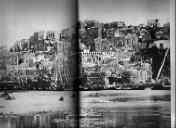- DAN
- LATRUN
The tribe of Dan descends from Dan, first son of Jacob through Bilhah, handmade of Rachel. According to Genesis 30:6, Rachel said, “god has judged me (danani דנני ), and also heard my voice, and has given me a son”. Hence, he received the name of Dan.
When Joshua invaded Canaan and the tribes were allotted their territories, Dan received the land between the tribe of Judah on the south and Benjamin and Ephraim on the north, and stretching from the hills leading to Jerusalem in the east to the Sea on the west. Its cities included (in alphabetical order): Ayalon, Baalat, Bnei Brak, Ekron, Elon, El Tekeh, Eshtaol, Gat Rimon, Gibbeton, Ir Shemesh, Meyarkon, Rakon, Shaalabin, Timnatah, Yafo, Yehud, Yitlah, and Zorah. The Ayalon Valley was part of this territory. In the 2nd century BCE, the Judeans established a military camp in this valley that would later become the Latrun Monastery. It was this site that became part of, what we know today, as the West Bank. During the days of Joshua, part of the tribe migrated north, fought against the land of Leshem which was in the northernmost reaches of the Jordan, and took possession of it. Thus, there was a northern tribe of Dan and the southern tribe located on the original tribal territory.
In the 2nd century BCE, Judah Maccabee established his camp here in preparation for battle with the Seleucid Greeks, who had invaded Israel/Judea and were camped at Emmaus. During the Crusader period, the German Templars established a castle on the site in 1187. Since then, Arab settlers migrated to the area and established the settlement of Imwas (Arabic for Emmaus) nearby the site and subsequently, on the site itself, naming it “al Latrun”. The settlements of Yalo and Beit Nuba were also established in the area. In December 1890, a monastery was founded at Latrun by French, German and Flemish monks of the Trappist order from Sept-Fons Abbey in France, at the request of Monseigneur Poyet of the Latin Patriarchate of Jerusalem. The monks soon established a vineyard using knowledge gained in France and advice from an expert in the employ of the Carmel-Mizrahi Winery in Rishon l’Tzion under Baron de Rothschild.
This monastic community was expelled by the Ottoman Turks during World War I and the buildings were pillaged. Construction of the present building began in 1926 and continued until 1954. Following the 1936-1939 Arab revolt, the British authorities built a number of police forts at various locations; Latrun was chosen due to its strategic significance, particularly its dominant position above the Tel-Aviv-Jerusalem road. Many members of the Yishuv who had resisted British occupation were imprisoned at Latrun and the surrounding countryside.


No comments:
Post a Comment